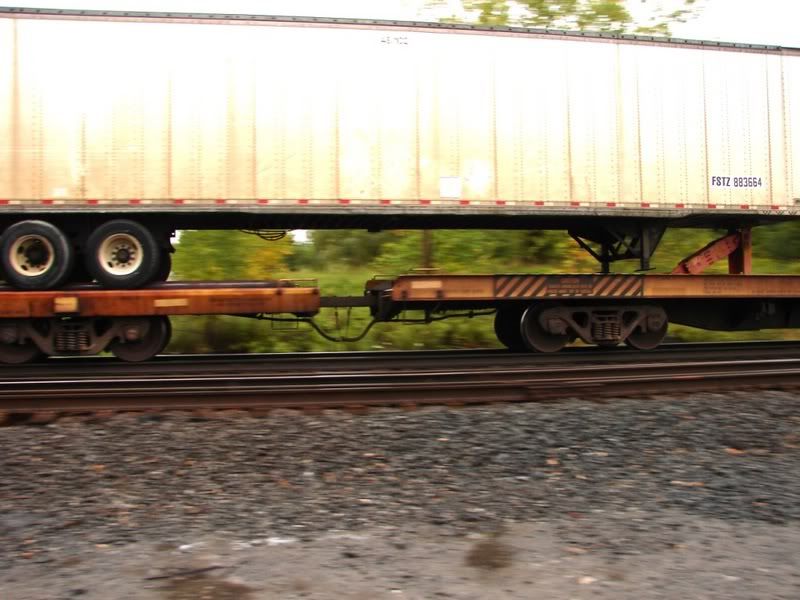When the articulated cars became prevelant on Conrail, we occasionally had one, with a load straddling two different platforms. We were allowed to kick them out of the train, as no manager wanted to "take the hit" on what was then, new territory. Eventually, as seen today, it was determined that the articulated connection was stong enough to survive even the roughest train handling, so it was allowed. On occasion, you would find a load straddling two cars. This was never, and still isn't allowed, due to slack movements, as well as the chance of drawbar/knuckle failure possibilities. That 5th wheel hitch is bulletproof. I have a picture, from a piggy-back wreck, of a flatcar holding a raised 5th wheel hitch, and about 6 feet of trailer, still holding onto the hitch, atop a pile of twisted cars. I also set a car out, in Allentown one night, when a passing train reported a "trailer failure" in the train. The frame had snapped, and the trailer was shaped like a "V", with the center of the trailer laying on the solid drawbar, between the cars. The sides were bulging out, and the load hadn't come out, when we set it out at the ramp.
Traveling Engineer, Coast to Coast, Border to Border.
Any Train, Anytime, Anywhere.....
 [/img]
[/img]